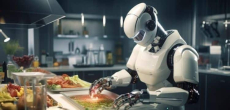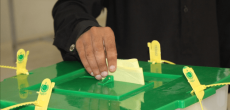[vc_row][vc_column][vc_column_text dp_text_size=”size-4″]The reason Roomba J7+ has superior navigation tech is the inclusion of a camera at the front along with an LED spotlight, which gives further data for the artificially intelligent hazard detection to work with.
We have advanced from the good old broom to vacuum cleaners (as intelligent as they are now), and finally to robots that cleverly scamper around without requiring your assistance. They will also clean below the sofa, which is something we rarely do. The iRobot Roomba J7+, which, among other things, doesn’t trip over cables, may be a good example of how robots themselves have evolved through time.[/vc_column_text][/vc_column][/vc_row][vc_row][vc_column][rs_space lg_device=”30″ md_device=”” sm_device=”” xs_device=””][vc_column_text dp_text_size=”size-4″]The presence of a front-facing camera and an LED spotlight, which provide more information for the artificially intelligent hazard identification to use, is what gives the Roomba J7+ its superior navigation technology. Additionally, this will be learned over time, so more trips around your house will make it smarter. This is known as “PrecisionVision Navigation” by iRobot. The manufacturer is so confident in their product that they guarantee a complete replacement of the robot vacuum cleaner with a new model if someone’s Roomba J7+ fails to recognise pet waste, for example, and ends up smearing itself and the floor as a result. (Since we don’t have pets at home, we haven’t been able to test this.)
What we have, instead, seen is how well the new-found navigation skills are, and thereby better obstacle detection work around wires and cables. The Roomba J7+ will notify you (via the smartphone app) if it detects a cable strewn around in any room – though you’ll need to enable this work-in-progress while setting up the Roomba J7+ via the app. You can mark obstacles as temporary too.[/vc_column_text][rs_space lg_device=”30″ md_device=”” sm_device=”” xs_device=””][vc_column_text dp_text_size=”size-4″]We saw that the Roomba J7+ was able to properly navigate around cables even when it passed underneath tables, which frequently had wires on the floor beneath them (and, in some cases, just above them so as to not miss a place). The benefit is that this robot vacuum won’t become tangled in connections that have been carelessly left lying around (charging cables, lamp power cords, the lot), nor will it find itself perched dangerously on the edge of an abnormally thick carpet. Bumping into items has changed somewhat in behaviour but hasn’t totally vanished yet.
The iRobot J7+ looks forward, but not much towards the sides (considering the camera is wide-angle), and can bump into door frames and table legs as it plots a way forward. Small niggle, compared to the overall dialing up of smartness.
The Roomba J7+ is slightly wider, as far as dimensions go, than a nice porcelain dinner plate. Underneath are dual brush rolls with differing treads and patters for dust collection, as well as an edge sweeping brush that’s partly visible when at work. The brush rolls and their wider pattern spread and opposing direction movement should make carpet cleaning more effective, because that’s where the difficult dust and dirt mostly tends to be.[/vc_column_text][rs_space lg_device=”30″ md_device=”” sm_device=”” xs_device=””][vc_column_text dp_text_size=”size-4″]The big difference is that we noticed much less hair tangling in these brushes – they get sucked straight in. You’ll notice a big button on the top of the Roomba J7+. There’s an LED ring around this button, which glows pale while it’s on charge, red when the battery charge is really low and turns off when everything is in place, and it’s docked. However, in our case, pressing this button on the Roomba J7+ never started the cleaning cycle – we always had to invoke the clean command from within the smartphone app.
The charging base (you may also call it the dock) is the final piece of what is a very tech-intensive utilitarian jigsaw. While mapping your home, the Roomba J7+ knows where this base is placed. It needs that knowledge too because that’s where it’ll charge and empty its bin. The latter’s functionality is what we believe adds to the convenience of having a robot vacuum cleaner in place.
After it has scampered around and cleaned the room (or multiple rooms), the Roomba J7+ will head back to the charging base and dock itself. Then you’ll hear a loud whirring sound for a handful of seconds – that’s the suction mechanism pulling the collected dust from the bin inside the Roomba J7+ to transferring it to the dirt disposal bag on the upper half of the base. This is big enough for as many as 60 days of dust collection, after which you replace it with another one.
The smartness and the subsequent potential of convenience of robot vacuum cleaners is what the iRobot Roomba J7+ is building on. It can automate the floor cleaning in your home. It can create maps for different rooms and empty its bin too. The core movement tech is definitely superior to the conventional Light Detection and Ranging (LiDAR) implementation, which gives the Roomba J7+ better sight of where it is going, and what to avoid. That reduces failure chances and the need for your intervention to sort out matters.[/vc_column_text][/vc_column][/vc_row]











